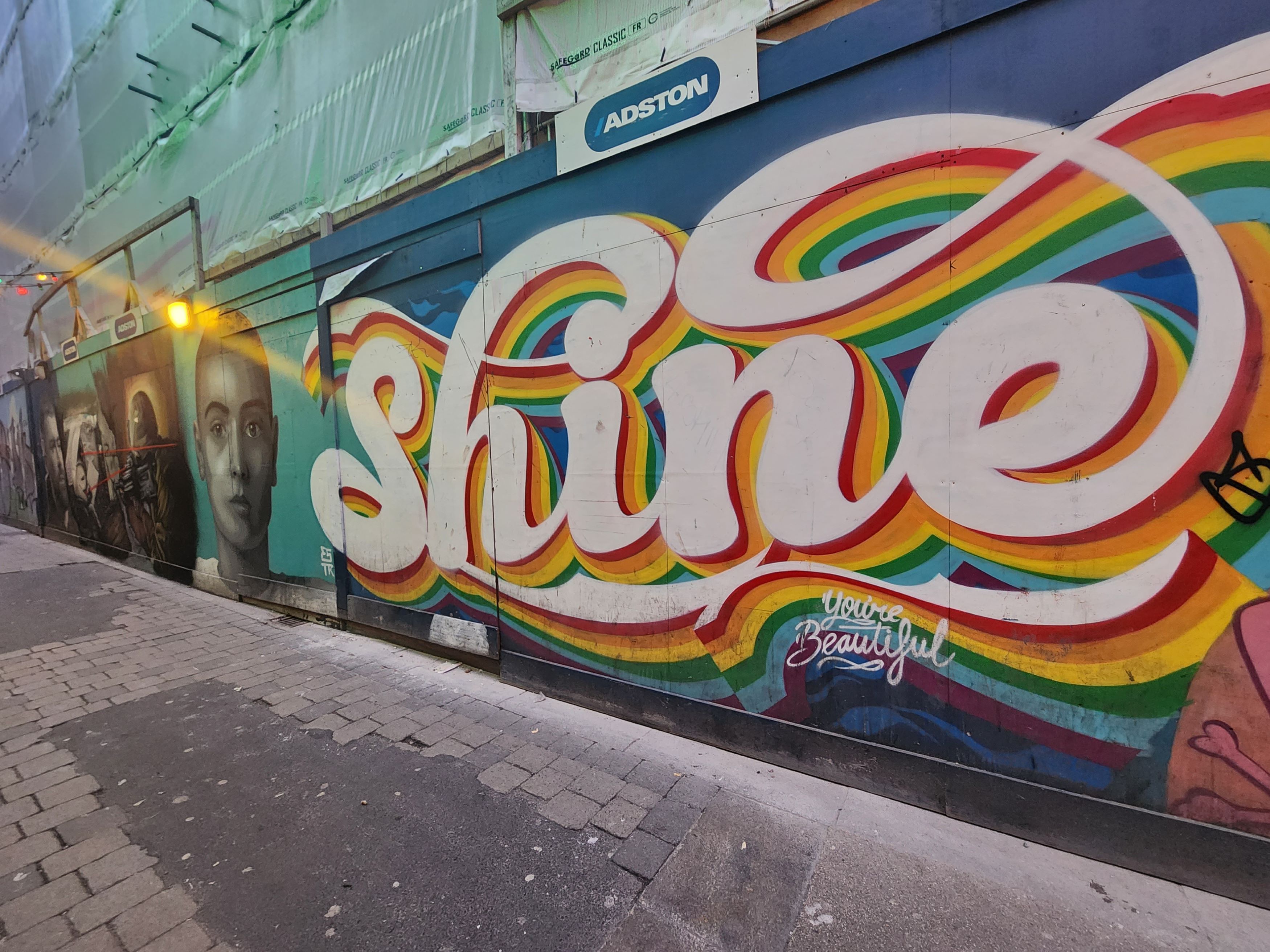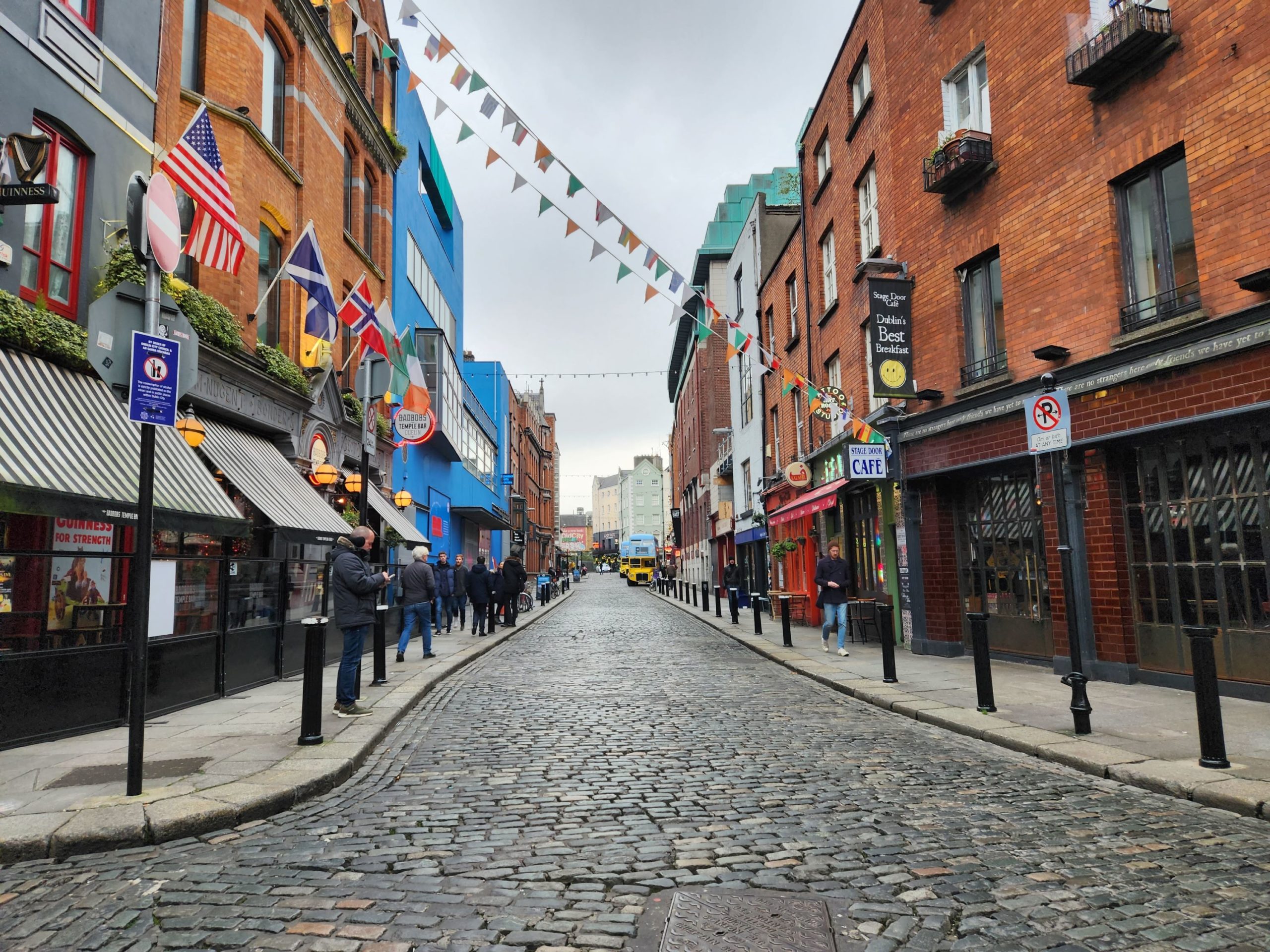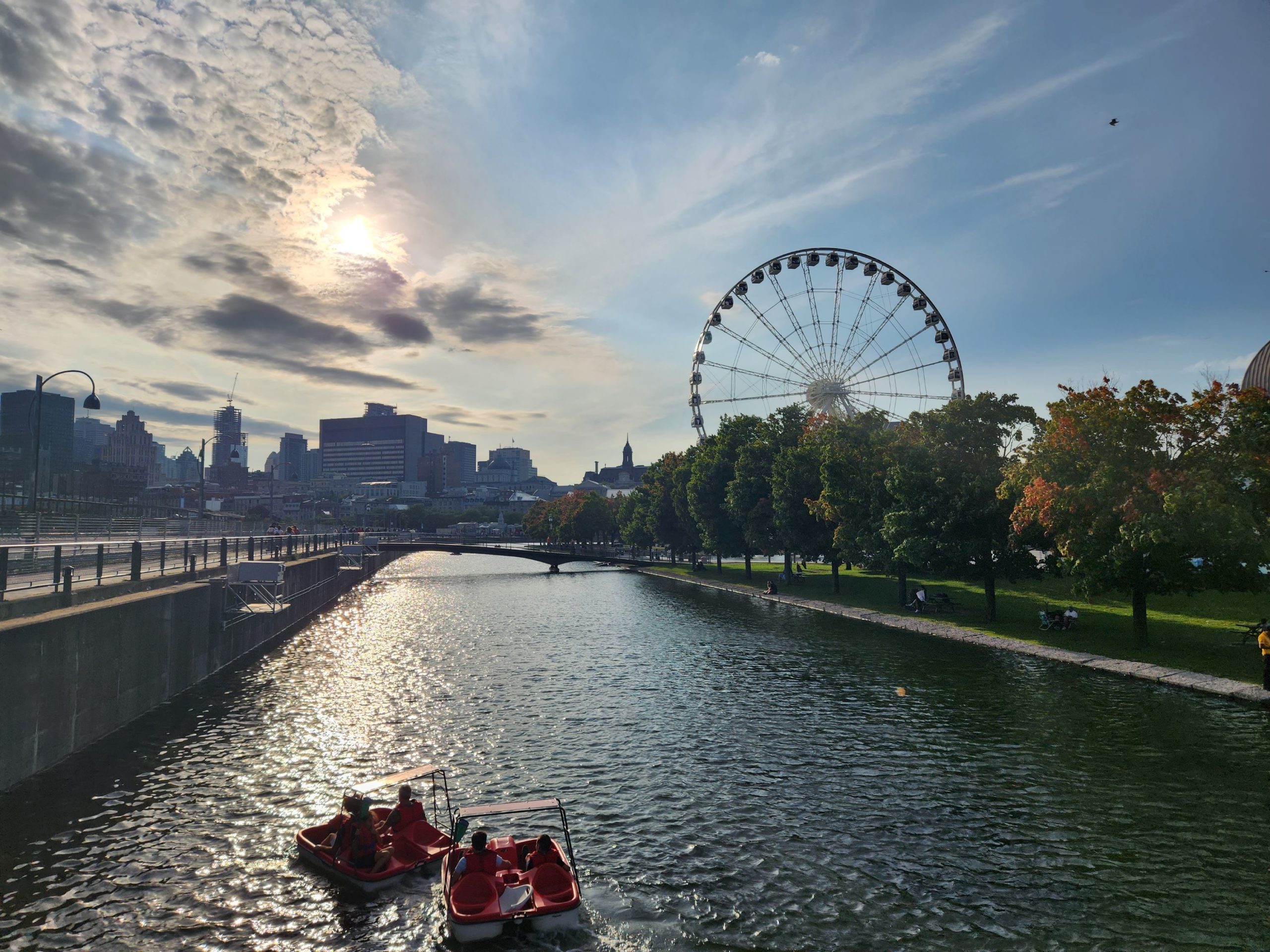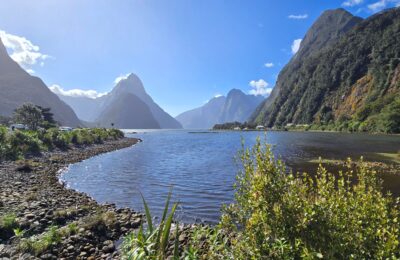Dublin is the capital and most-visited city in Ireland. When planning our Irish road trip, I thought two nights and one day in Dublin would suffice. Many people and websites warned Dublin was overrated. Some suggested that two nights in the city was one too many.
However, I usually find that I enjoy capital cities more than many other travelers. I typically find they have some of the best museums and architecture that helps contextualize the country’s history and culture. They often have good food scenes and quirky or unusual art.
With that, I booked two nights and one day in Dublin, which really amounted to one full day, and found myself wishing I had more.
Dublin came at the end of our Irish road trip, so it was easy to compare it to other areas of the country. For lack of a better term, it did feel a bit more generically European than distinctly Irish compared to some other Irish cities. However, many European capitals also have this trait. I still found Dublin to have plenty of Irish culture and history on display.
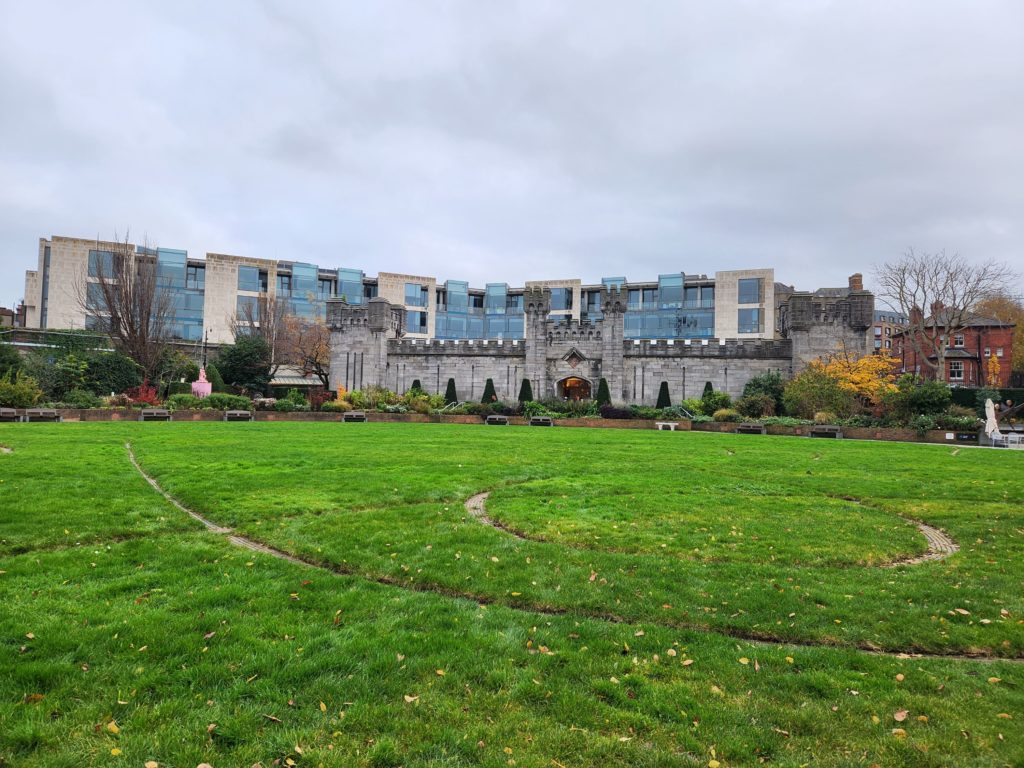
If you don’t enjoy visiting European capitals for the reasons above, chances are one day in Dublin may be enough for you.
As it was, I really only had one full day to explore Dublin. So I had to make some tradeoffs between things to do. However, I still managed to fit in a lot. Hopefully I’ll be back someday to see more.
If, like me, you find yourself with limited time, here are 11 things you can do in one day in Dublin.
Visit the National Museum of Ireland
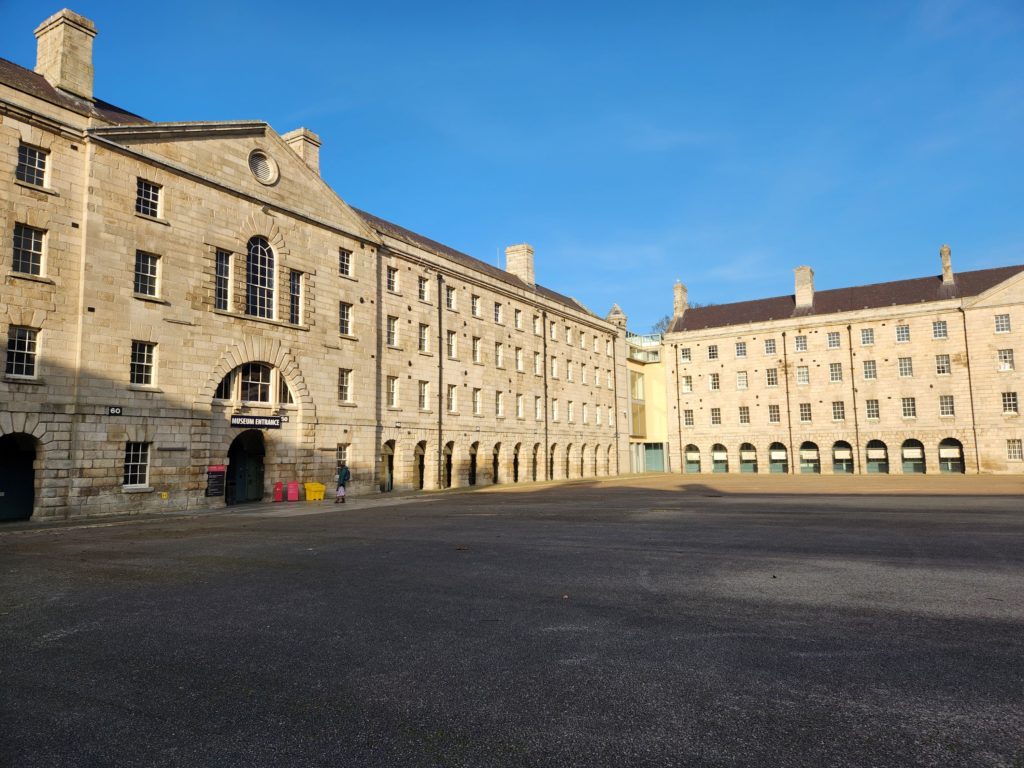
The National Museum of Ireland is a large museum covering national and international history and archaeology. There are three buildings across Dublin that make up the museum, and all are free to enter.
The buildings are in different neighborhoods and each cover different subjects. There is the archaeology and natural history museum, the country life museum and the decorative arts and history museum, which is the newest one.
I only had time for one of the museum branches and chose the archaeology and natural history museum. It was the most interesting of the three to me and near where we were staying in Stonybatter.
Exhibits covered national and international art, Irish history and independence, and the extent of the global Irish diaspora.
My favorite exhibit was the history of money in Ireland. This exhibit contained currencies from thousands of years ago into the present day. The overarching theme of this exhibit was about how money tells a story about cultural importance to a society throughout history. It made a sort of sad point about how the rise of credit cards is starting to erase that part of a culture.
See the Christ Church Cathedral
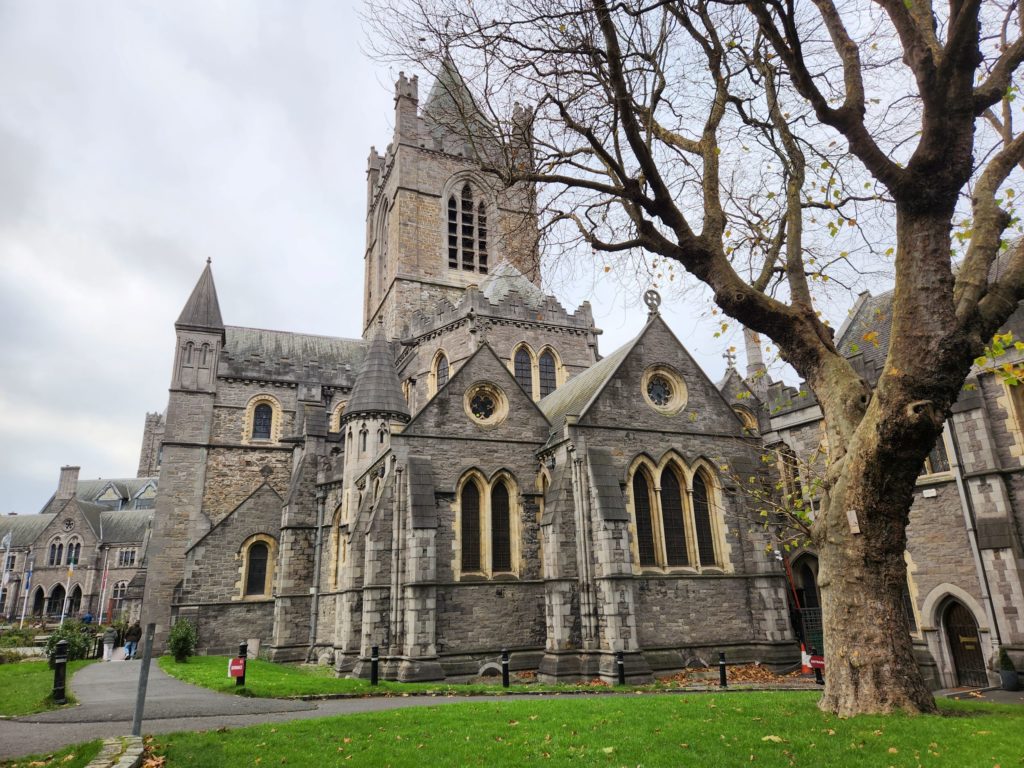
The Christ Church Cathedral is a giant cathedral with impressive medieval architecture in the heart of Dublin. Its sheer size dominates the block. You can clearly see it from the River Liffey. Founded in the 11th century, Christ Church Cathedral is the oldest medieval church in Dublin, even older than the famous St. Patrick’s Cathedral.
I walked along the perimeter of the cathedral and admired the architecture. You can also pay the equivalent of about $11.50 to go inside. Admission to the cathedral includes the exhibits and the crypts. This crypt dates back to the 12th century when it was a Viking church.
Unfortunately, we didn’t have enough time to venture inside the cathedral, but enjoyed seeing it from the outside.
Visit Dublin Castle
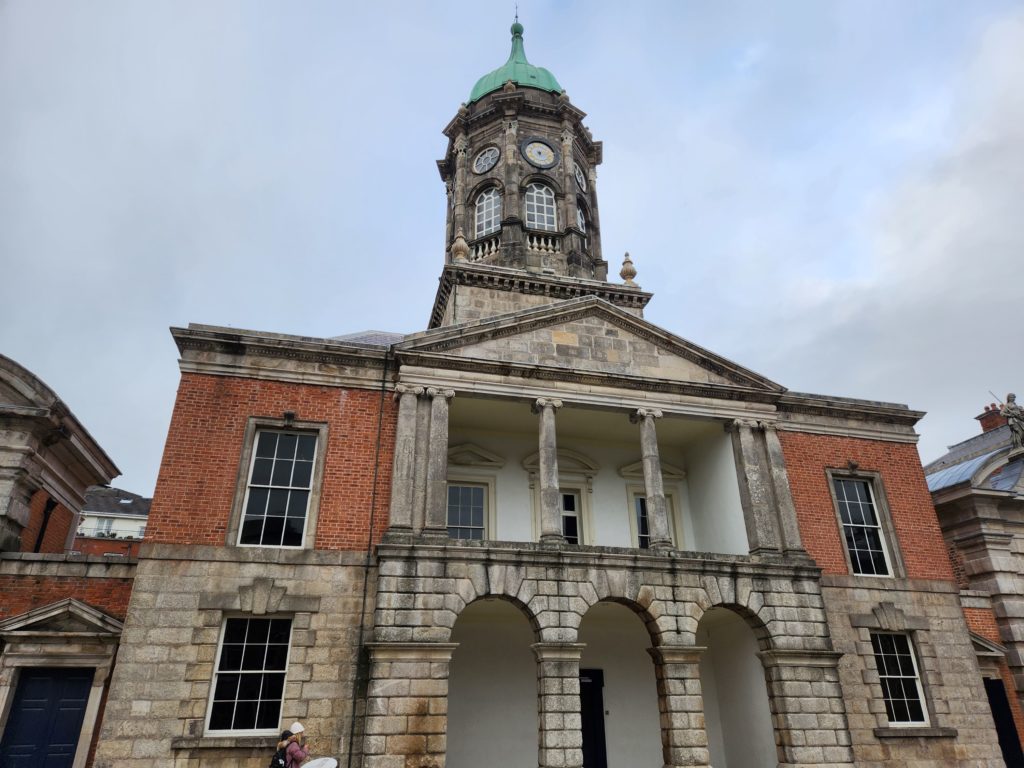
Dublin Castle is a key tourist attraction in the heart of the city. It doesn’t quite look like what you see of Irish castles in the rest of the country. It’s more of a complex in the middle of the city.
The building has served important purposes in the city throughout history. It was originally a defensive wall. In the 19th to early 20th century, it was the British center of parliament. It is currently a government complex and conference center.
You can pay to go inside the castle and see the exhibits, or just explore the exterior. Though most of the architecture feels more like a modern European government building, the gates more so resemble what you expect to see in something called a castle.
There are also gardens in the back with a Celtic design, which are what I enjoyed the most.
Take a Free Walking Tour
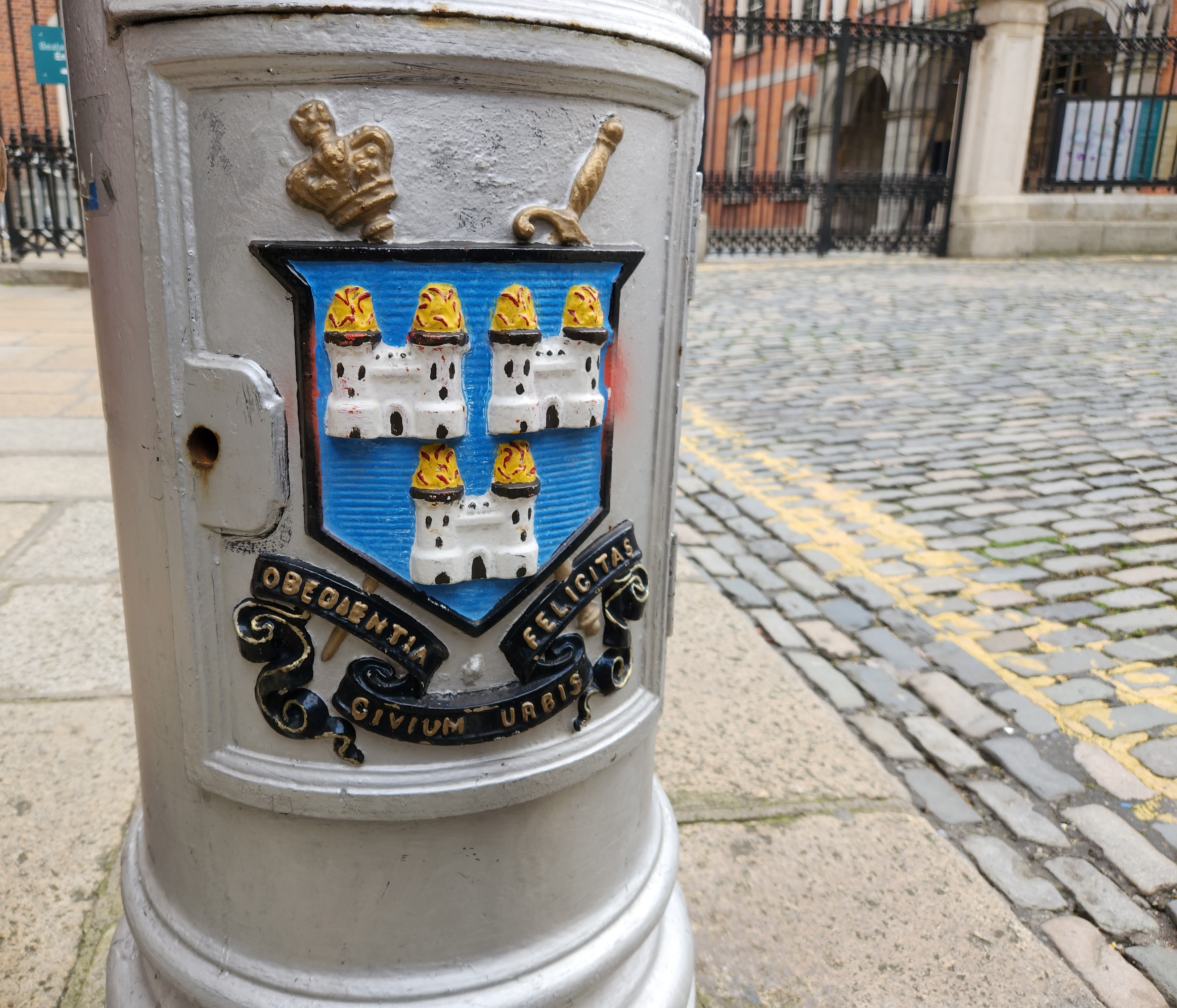
One of the best things about major cities like Dublin is that there is always the option to do a free walking tour. I’m a big fan of these walking tours because they help you get your bearings in a new city. Good walking tours teach you about a city’s history and point out places to visit.
Walking tours are good to do on a first day in a new city because they help you learn a bit about the layout of the city and give you ideas of additional things to do. They can also be helpful if you only have a limited time in the city and want to cover a lot of ground in one or two of its biggest neighborhoods. This reason was why I chose to spend a couple of hours of our one day in Dublin on a walking tour.
Dublin has a lot of tours to take, so you could go on multiple free walking tours if you have more time in the city. I chose a more general walking tour to hit major spots in the city and learn about its history. However, I was tempted to take the folklore tour that teaches about Celtic folklore in Ireland. Because I got to learn a bit about Celtic folklore along the Ring of Kerry, I opted for the Irish history tour.
It ended up being a great choice because our guide was funny and very knowledgeable about history in Dublin and Ireland in general. It was a small group tour that felt more like hanging out and chatting about history, which is rare for a free walking tour in my experience.
Tour the Guinness Storehouse
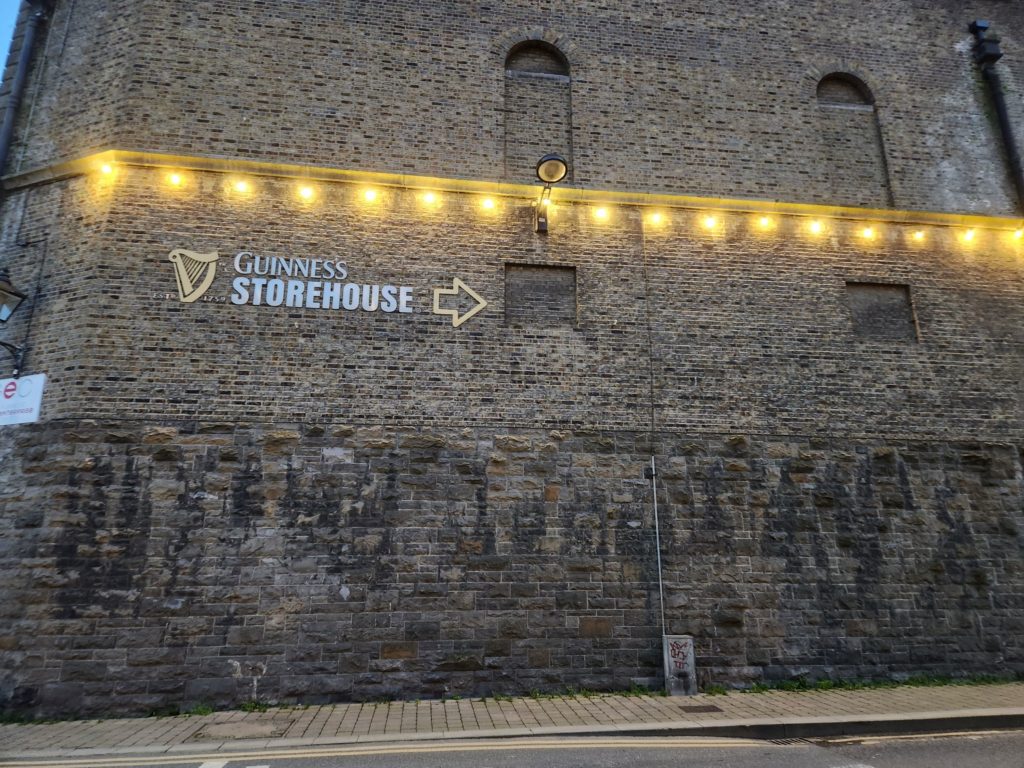
One of the top tourist attractions in Dublin is the Guinness Storehouse. The Guinness Storehouse Experience was by far the most crowded touristy thing we did throughout our entire time in Ireland.
The Storehouse tour starts by taking you through the history of brewing Guinness in Ireland. It shows videos of how they originally made barrels, then takes you through how they brew the beer in present day. I learned on this tour that Guinness pioneered the technology for nitro stouts, which is my favorite style of beer.
One of my favorite parts of the tour was the guided tasting. The tasting experience starts in a brightly lit room with four different barrels wafting specific scents into the air. These scents are the four different aromas that you smell through the fermentation process. They recommend taking a big whiff of each to enhance the tasting. Then, you take a small sample of Guinness into a more dimly lit room where they teach you the proper way to drink a pint.
After learning how to properly drink a Guinness, the next exhibits are about the history of marketing and advertising Guinness across the world.
As a marketing/advertising geek, I quite enjoyed this exhibit as well.
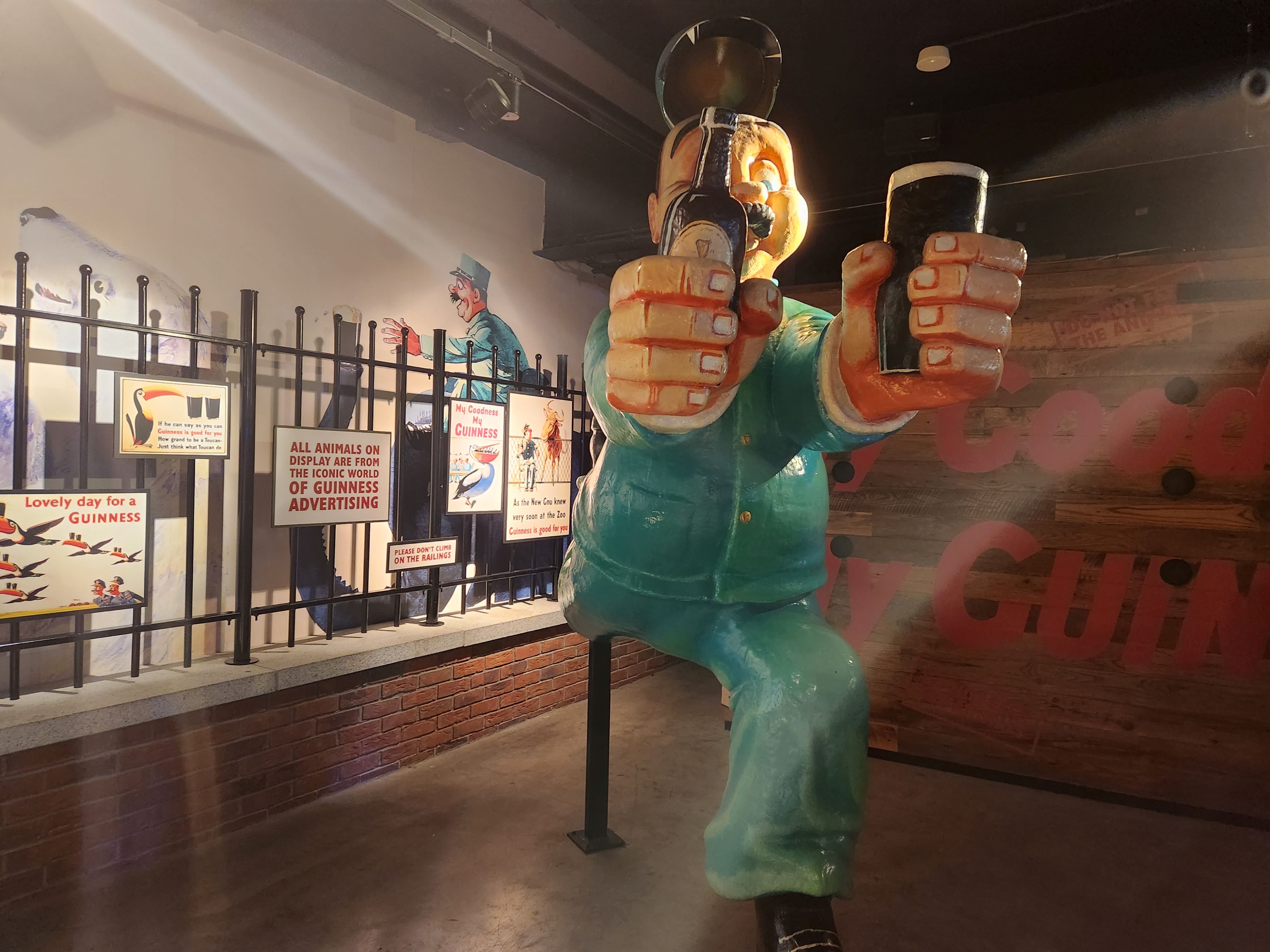
Finally, it’s time for a full pint of Guinness. If you’re a Guinness lover, you’ll have been craving this throughout the tour. A pint of Guinness – regular or non-alcoholic – at the Gravity Bar is included in your admission ticket. When you purchase your ticket, you can also pay to upgrade so that you can get a pint with your selfie on it. But we chose to go with the standard ticket.
The gravity bar is above Dublin. We visited at night so we could maximize our time in the city during daylight hours, but it would be really cool to see the view during the day.
One interesting thing about the Gravity Bar is that you see just how many people visiting the Storehouse don’t actually like Guinness. We saw countless nearly full or half-drunk pints littered across all the surfaces of the bar. I wondered how much these people really enjoyed touring the crowded Storehouse.
So is the Guinness Storehouse worth visiting? As a Guinness and general nitro stout lover and a marketing/advertising geek, I thought so. However, if you’re not into Guinness, I really don’t think you’ll get too much out of it, especially if you only have one day in Dublin.
See the famous Temple Bar and Brazen Head Pub
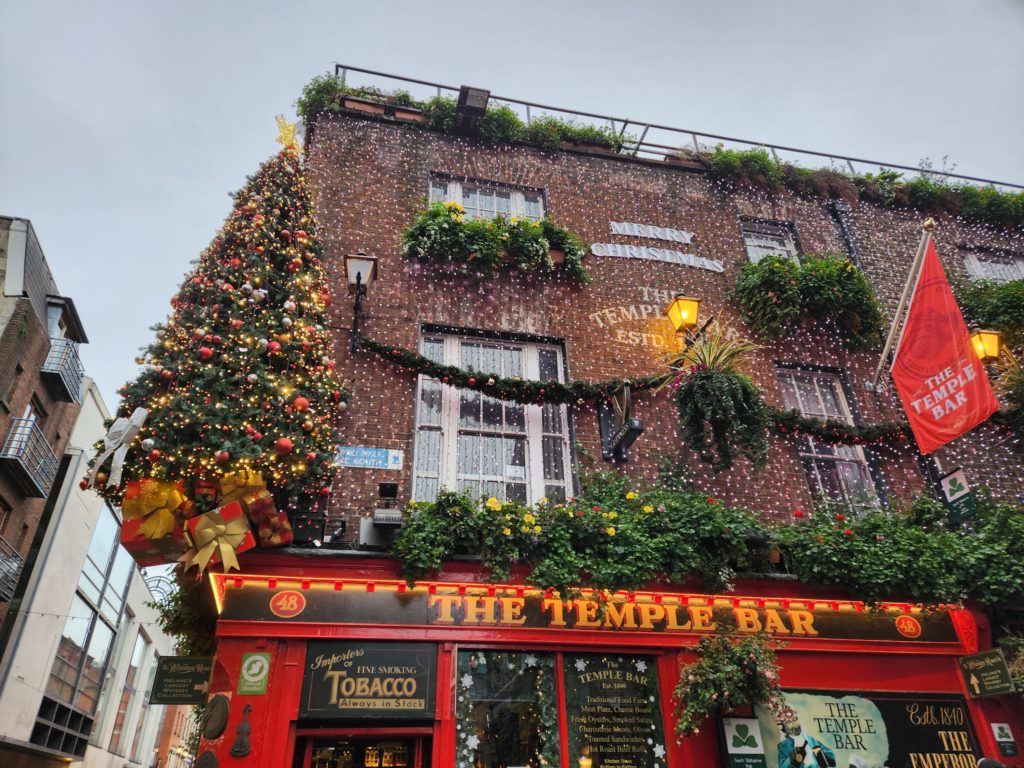
Dublin has two very famous pubs worth at least walking past, if not popping inside for a drink or meal.
Temple Bar is both a neighborhood and very famous pub in the heart of Dublin. It is so famous that surrounding pubs in the neighborhood painted their exteriors red to look like it. Some of them even have names that play on “Temple Bar” without invoking copyright laws.
I’m not sure exactly how Temple Bar got so famous. Its neighborhood was once only for drunken raucous partygoers. Then it cleaned up its image and became one of the most famous neighborhoods in the city, with the Temple Bar at its center. The neighborhood is still a major party scene, particularly for tourists.
Temple Bar is notorious for being the place to find the most overpriced place to find a pint in the city. Plus, it’s always packed. These two reasons turned us off from actually going inside for a drink, but we still wanted to see it from the outside.
The Brazen Head is another famous Dublin Pub. Established in 1199, it claims to be the oldest pub in Dublin and fifth oldest pub in the world. It also retains much of its original interior, which I think warrants a quick peek inside. Brazen Head has perhaps the second-most expensive pint in the city. When we walked past the Brazen Head, there was a long line of tourists waiting for a table. While I didn’t stop in for a drink, I did walk through the pub to see its interiors and spend a moment appreciating the cozy vibe inside.
Stroll down Love Lane
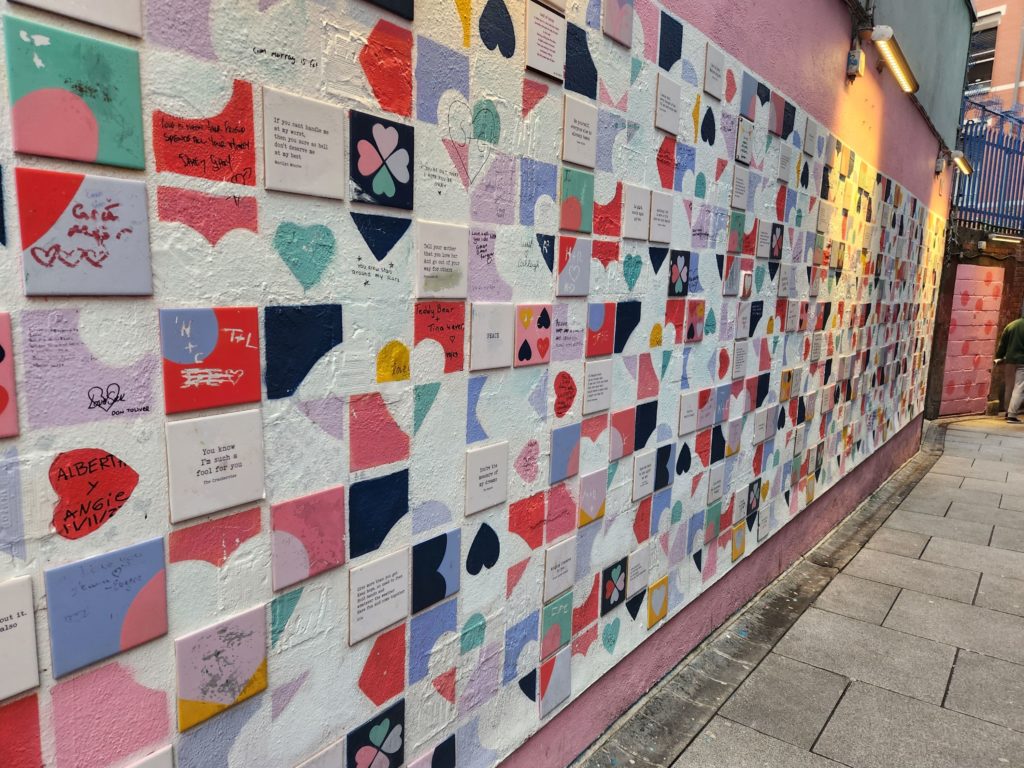
Love Lane is a street art mural alleyway in the Temple Bar neighborhood. The murals focus mostly on love and positivity, with the definition of love ranging from romantic to friendship to self-love.
Love Lane used to be just another dirty alleyway in the neighborhood. An initiative to clean up shady alleyways in the neighborhood transformed it to what it is today.
These murals are some of the best-known from this initiative. Nearby, there is an alley that lists a mural tour of the city. You can embark on this tour to find all the specially themed alleyway murals if you have more time.
Eat Traditional Fish & Chips
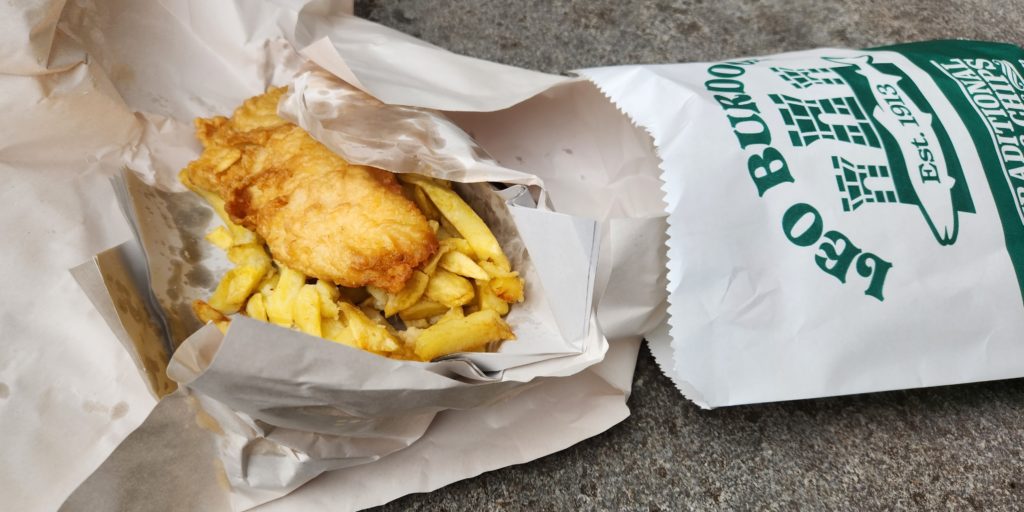
Fish & Chips are a must eat when you’re in Ireland, and you can get a top-notch meal throughout the country. But one of the best-known places to get them is Leo Buddock’s in Dublin.
Leo Buddock serves fish & chips the way (I’m told) they were meant to be eaten – wrapped inside of a paper. They have multiple locations around the city, but I went to the Christchurch location. This location is takeout only, but there are nearby areas where you can enjoy them like the Christ Church Cathedral or Peace Park.
Even if you choose not to get fish and chips here, make sure you get them somewhere in Ireland known for its crispy fried cod and thick chips.
Wake up with an Irish Coffee
Though San Francisco tries to claim it started the Irish coffee craze, its origins trace back to a city in County Limerick on the west coast of Ireland. But you don’t have to go all the way to the County Limerick to enjoy some Irish coffee.
Plenty of coffee shops and pubs throughout Dublin serve Irish coffee. It’s typically just coffee with a splash of Bailey’s or maybe Irish whiskey, so it’s not going to get you hammered. And it’s a special vacation treat if you like coffee and whiskey.
One place you can get a tasty and warming Irish coffee is The Stage Door near the River Liffey.
Experience Pub Culture
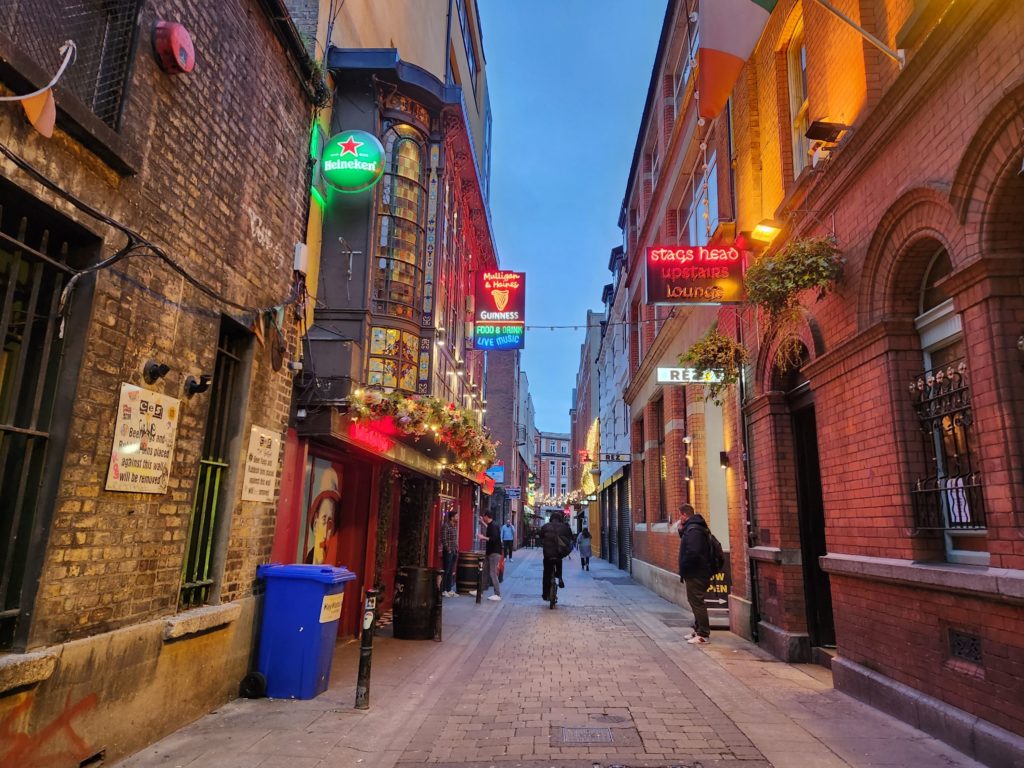
You can’t visit Ireland without experiencing pub culture. This sentiment is doubly true in Dublin. While I don’t think the iconic tourist spots like Temple Bar or Brazen Head are necessarily the best places in the city to experience pub culture, there are plenty of pubs in the city where you can get your fill.
The Temple Bar neighborhood is the main tourist district, and you have plenty of pubs to choose from if you go out in this area. However, other slightly more residential neighborhoods have more of the classic Irish pub culture.
Stoneybatter and Smithfield are two of the more hipster neighborhoods in the city. They claim to have some of the coolest pubs in Dublin. I really enjoyed The Cobblestone in Stonybatter. Though it was hard to get a seat on a weekend night.
Listen to Traditional Music
A major part of pub culture is live traditional music, also known as “trad sessions.” Most pubs will have signs informing you of their trad music nights, and you’re sure to find one if you’re there on a weekend.
Trad sessions are a fun part of Irish culture because they are not put on for show. They typically consist of musicians sitting around a table, playing instruments like the tin whistle and banjo and occasionally singing.
The Cobblestone pub is known for its daily trad music sessions. Musicians gather near the bar entrance and sit around a table playing music, singing and drinking all night long. Occasionally, the bartender will start shushing all the patrons in the bar. From the entrance all the way through the back, it will be a chorus of shushes until everyone falls silent. Quite a feat in such a packed bar. Then, someone will begin singing an old Irish folk tune. One lovely tune was a story of an Irish immigrant coming back home to see how much had changed.
Additional things to do:
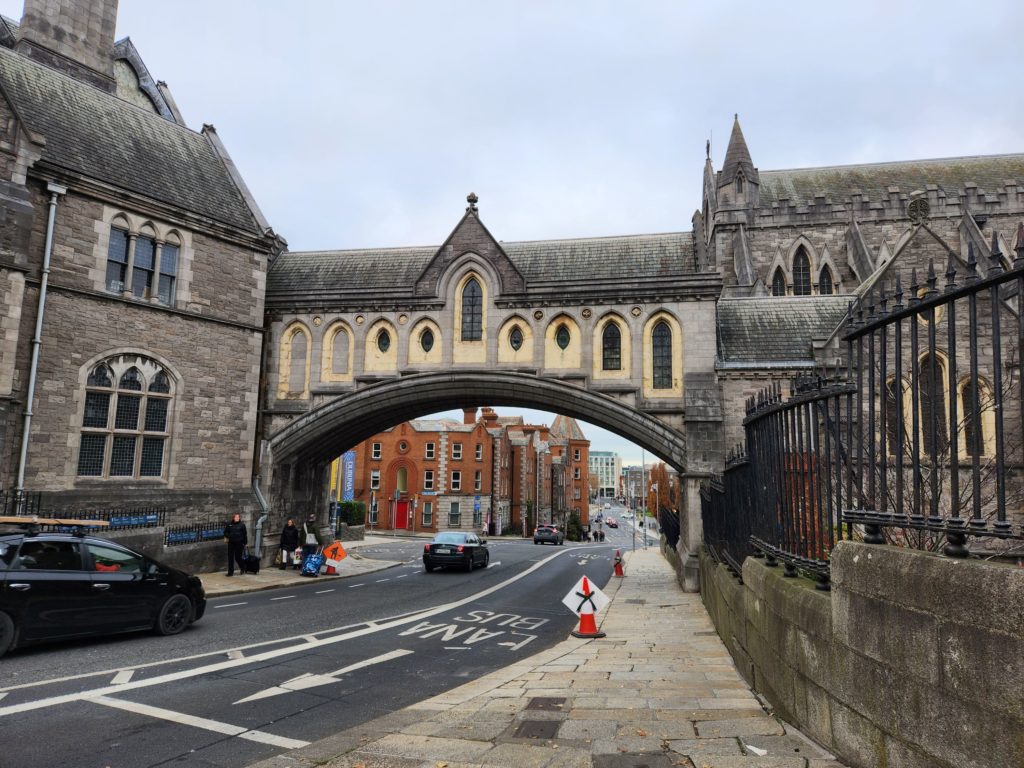
Though many people claim Dublin is overrated and one day in Dublin is enough, I found myself leaving wishing I had more to see everything I wanted.
Some of these places include:
Kilmainham Gaol:
Kilmainham Gaol is the site of an old prison that once housed Irish revolutionaries. Today, it’s a museum dedicated to teaching about the history of Irish revolutions and its prisoners.
Irish Whiskey Museum:
The Irish Whiskey museum is unaffiliated with any of the whiskey distilleries, and therefore offers an unbiased perspective of whiskey history in the country. It discusses whiskey’s importance in Ireland’s past and includes guided tours and tastings.
Dublinia:
Dublinia is a museum dedicated to Dublin’s viking history. It promises to take visitors back to Viking and Medieval times and learn about how Ireland is influenced by the Viking era.
The Little Museum of Dublin:
The Little Museum of Dublin tells a story of Dublin’s history. It’s been called one of the best museums in Dublin and is known as a fun cultural experience.
Trinity College:
Trinity College is Ireland’s oldest academic institution and is typically a must-visit when you’re in the city. It would likely have been part of our walking tour if not for the unfortunate timing of riots in the city right before we arrived.
Book of Kells:
The Book of Kells is a unique display of a Celtic manuscript of four books of the New Testament of the bible. You can find the Book of Kells in Trinity College.
Marsh Library:
Marsh Library is centuries old and was opened to the public in Dublin during the Renaissance era. I read it was a nice (free!) alternative to the Book of Kells and Trinity College Library, but it was unfortunately closed on Saturday when we were in Dublin.
St. Patrick’s Cathedral:
St. Patrick is known for bring Catholicism to Ireland, and St. Patrick’s Cathedral is one of the oldest churches in Ireland and known as a major pilgrimage site in Dublin.
Jameson Distillery Tour:
A tour and tasting of one of the most famous Irish whiskeys available. They also offer cocktail making classes and a cask draw experience.
Day Trips from Dublin:
If you have more than one day in Dublin and want to base yourself in the city to visit other places in Ireland, there are plenty of day trips. Some include:
Giant’s Causeway: This UNESCO World Heritage Site in Northern Ireland features hundreds of columns of basalt rocks. Officially, the columns formed due to a volcanic fissure, but legend says it was due to a giant’s fight. Giant’s Causeway is really cool to see in person, but it is about three hours from Dublin so will be quite a long day trip.

Cliffs of Moher: Considered the most visited site in Ireland, the Cliffs of Moher are one of they most iconic spots of the country. Multiple movies were filmed here, including Harry Potter and Leap Year. This day trip is about two and a half hours from Dublin.
Blarney Castle: The Blarney Castle sits in County Cork and became famous due to housing the Blarney Stone. You can take a trip to the Blarney Castle just to kiss the Blarney Stone, or you can tour the full castle grounds. You can also take a tour of multiple iconic Irish sites in one day, which include the Blarney Stone, Rock of Cashel and Cahir Castle.
Tullamore Dew Distillery: Tullamore Dew is a whiskey distillery about 45 minutes outside of Dublin in the town of Tullamore. You can take a day trip to tour this distillery and enjoy some whiskey tastings.
Logistics:
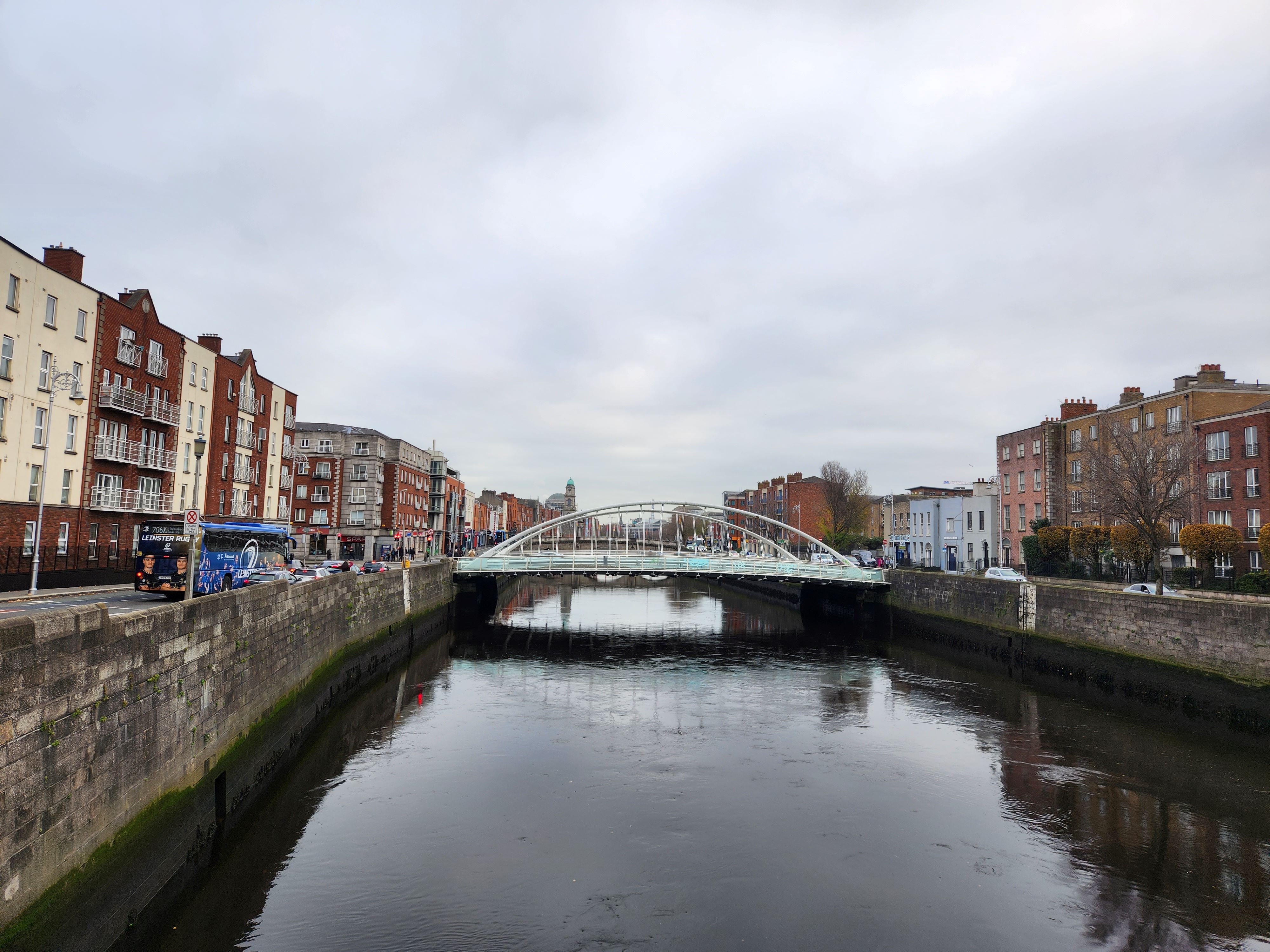
Safety:
Before traveling to Dublin, I read a ton of information online that said Dublin was absolutely one of the safest large cities in Europe/the world. One of our cab drivers said there was a time in Dublin’s history where you could accidentally leave your bag on the metro and return to find it exactly where you left it, though that may not be exactly the case anymore.
The cab driver told this story because, unfortunately, we arrived in the city the night after the city’s worst riots in decades/potentially ever. The riots, which were known for violence and destruction, occurred the night before we entered the city. I was worried for what we were coming into, but was reassured by locals that everything was okay.
I will say, I didn’t feel in danger the entire time. Really, we arrived in Dublin during a once-in-a-century occurrence, and it was just bad luck.
Where to Stay:
There are a few areas recommended to stay in Dublin:
- Temple Bar: This neighborhood, which also shares the name of the famous pub, is in the center of the action and a popular place to stay as a tourist. If you stay here, you’ll be easy walking distance from major tourist attractions. However, when I read reviews for hotels and Airbnbs in this neighborhood, they all complained about the noise at all hours.
- Smithfield & Stonybatter: These two neighborhoods border each other and are just across the River Liffey from the Temple Bar neighborhood. Smithfield was named one of the coolest neighborhoods in the world. They are both pretty hipster neighborhoods, with Stonybatter being relatively less gentrified. Both boast lively pubs and international cuisine while also being relatively close to major tourist attractions. We stayed in Stonybatter, and enjoyed the atmosphere while being walking distance to major attractions. The delicious Indian food was also a big plus.
- The Docklands: The Docklands neighborhood is known to be a richer part of town, sometimes dubbed “Silicon Docks.” It is a good place to stay in more luxury accommodations or get more off the beaten tourist path.
Time Out has a comprehensive list of Dublin neighborhoods.
How to Get Around
If you stay in one of the main tourist districts in Dublin, it will be easy to get around by foot. Most tourist areas were at most a 40-minute walk from our hotel. However, Dublin also has a solid public transit system that can take you around the city. We didn’t get to experience it because it was running a limited schedule due to the riots.
I do not recommend driving a car in the city center unless you really enjoy driving in cities. Dublin has a lot of traffic. Although we were on an Irish road trip, we opted to drop our car off early so as not to deal with driving and parking in the city.
You can take a taxi in Dublin by calling for them or ordering them through Uber. In your Uber app, you cannot order an Uber driver, but strictly a Dublin taxi driver.
That’s how I recommend spending one day in Dublin. Are you planning a trip to Dublin? Is there anything you’d add?
